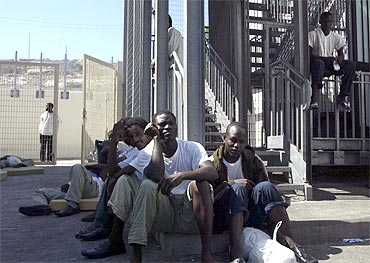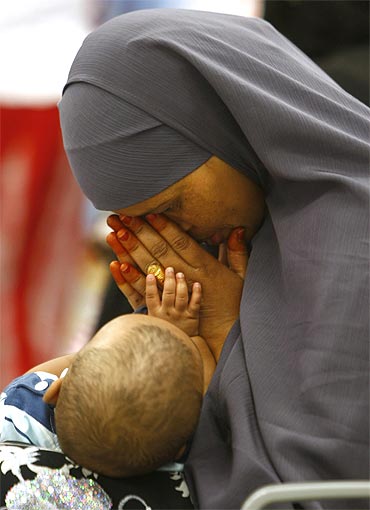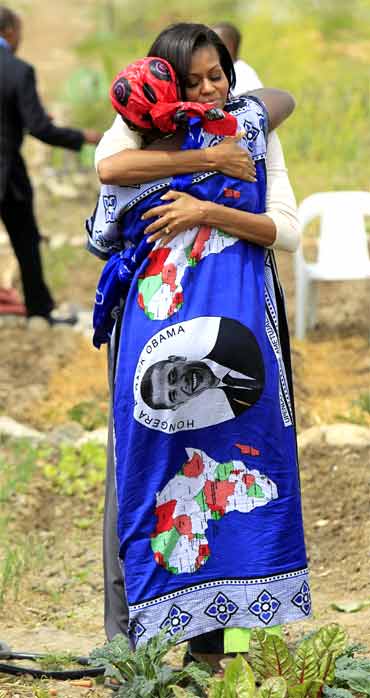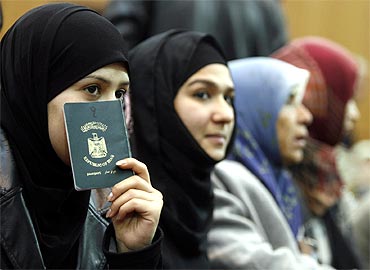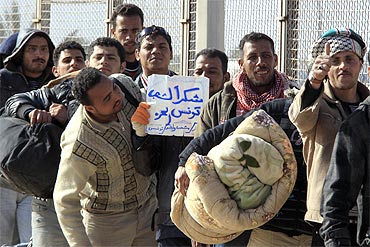 | « Back to article | Print this article |
In 2010, Europe saw maximum drop in refugees
New figures compiled by the United Nations refugee agency have shown a dramatic fall in the number of asylum-seekers trying to enter the industrialised world over the last decade.
On Monday, the United Nations High Commissioner for Refugees released the 2010 statistical overview of asylum applications lodged in Europe and selected non-European countries. The numbers of asylum seekers trying to enter wealthy countries dropped in 2010, especially in southern Europe where the flow mainly from Africa or Asia fell by a third, the United
Nations refugee agency said on Monday. The United States was the top asylum-receiving nation last year.
In all, 44 industrialised countries were covered in the report on new asylum claims.
Click on NEXT to read further...
Asylum-seekers down by 94 pc in Malta
A total of 358,800 asylum applications were lodged in industrialised countries in 2010, which was five per cent fewer than in 2009. The latest number was the fourth lowest in the last decade and almost half (42 per cent) of the 620,000 applications filed in 2001.
"The global dynamics of asylum are changing. Asylum claims in the industrialided world are much lower than a decade ago while year-on-year levels are up in only a handful of countries," said the UN High Commissioner for Refugees Antonio Guterres. "We need to study the root causes to see if the decline is because of fewer push factors in areas of origin, or tighter migration control in countries of asylum."
Most regions, including Europe, North America and North Asia, reported year-on-year decreases. Within Europe, the largest decline (-33 per cent from 2009) was seen in countries in the south, mainly because fewer people requested protection in Malta, Italy and Greece.
Malta experienced a decrease of 94 per cent in registrations while registrations fell by 53 per cent in Italy and by 36 per cent in Greece, according to the UNHCR.
Germany sees 49 pc increase in refugees
This decline in south Europe was offset by increases elsewhere, especially in Germany (49 per cent), Sweden (32 per cent), Denmark (30 per cent), Turkey (18 per cent), Belgium (16 per cent) and France (13 per cent). In the Nordic countries, the increases in Denmark and Sweden were offset by significant declines in Norway (-42 per cent) and Finland (-32 per cent).
Australia received 8,250 applications -- a 33 per cent increase compared to 2009, but down more than a third from 2001. The 2010 figure was well below levels reported by other industrialised and non-industrialised countries, putting Australia at 15 on the list of asylum receiving industrialised countries last year, the UNHRC report stated.
US tops list of asylum receiving nations
The top five asylum receiving countries in 2010 were the United States, France, Germany, Sweden and Canada. Together, they accounted for more than half (56 per cent) of all asylum applications covered in this report.
With 55,530 applications in 2010, the US was the largest recipient country. It saw a 13 per cent increase from 2009, partly due to a rise in the number of Chinese and Mexican asylum-seekers. France maintained its second-place position with 47,800 applications, followed by Germany (41,330).
Both countries saw an increase in applications partly due to a rise in asylum-seekers from Serbia and the former Yugoslav Republic of Macedonia. This development was widely attributed to the introduction of visa-free entry to the European Union for nationals of these two countries since December 2009.
A first in 5 years: Iraqis don't top refugee list
Serbia (including Kosovo) was the main source of asylum-seekers last year. It was responsible for 28,900 applications, an increase of 54 per cent compared to the previous year, when the country ranked sixth. Interestingly, the number of asylum applications in 2010 was comparable to 2001, soon after the Kosovo crisis, the UNHRC report stated.
Afghanistan slid to second place with a decrease of nine per cent compared to the previous year. Chinese asylum-seekers made up the third-largest asylum group in 2010, partly due to a substantial drop in the number of new applications from Iraq and Somalia.
For the first time since 2005, Iraq was not one of the top two countries of origin of asylum-seekers. It dropped to fourth place, followed by the Russian Federation. Somalia, which was ranked third in 2009, fell to sixth place in 2010.
'Egypt kept borders open to asylum-seekers despite crisis'
The latest numbers should be seen in the context of recent emergencies in Ivory Coast and Libya, noted High Commissioner Guterres. "Overall, it's still the developing world that is carrying the lion's share of responsibility for hosting refugees," he said. "Despite their many other challenges, countries like Liberia, Tunisia and Egypt have kept their borders open to people in need. I call upon all countries to support them."
